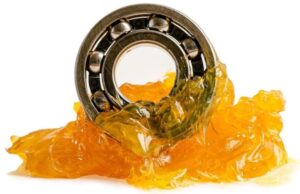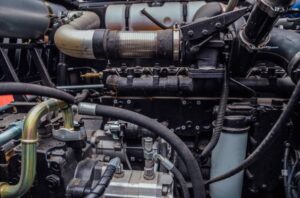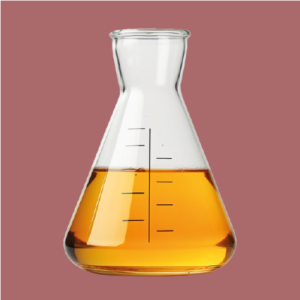Understanding Friction Modifiers: A Comprehensive Guide
Engine oil friction modifier are best engine friction reducer that is essential additives used in lubricants and fuels to enhance performance by reducing friction and wear between moving surfaces. They play a crucial role in the automotive, industrial, and aerospace sectors, where efficient lubrication is vital for the longevity and smooth operation of machinery. This article delves into the intricacies of friction modifiers, exploring their types, mechanisms, applications, and benefits.
what is friction modifier?
Friction modifiers, also known as friction reducers, are chemical compounds added to lubricants to alter the coefficient of friction between two surfaces. They are designed to improve the lubrication performance by reducing friction, wear, and energy consumption. This, in turn, leads to enhanced fuel efficiency, reduced emissions, and prolonged equipment life.
Types of Friction Modifiers
Friction modifiers can be broadly categorized into organic and inorganic types. Each type has its unique properties and applications.
Organic Friction Modifiers
Molybdenum Disulfide (MoS2): This is one of the most widely used friction modifiers. It forms a solid lubricating film on metal surfaces, reducing friction and wear.
Zinc Dialkyldithiophosphate (ZDDP): Commonly used in engine oils, ZDDP provides anti-wear and anti-oxidation properties, extending the life of the engine components.
Esters: Esters are organic compounds that provide excellent lubricity and thermal stability. They are often used in synthetic lubricants.
Fatty Acids: Fatty acids, such as oleic acid, are used to reduce friction in low-temperature applications. They are commonly found in biodegradable lubricants.
Inorganic Friction Modifiers
Graphite: Graphite is a crystalline form of carbon that provides excellent lubrication properties. It is used in high-temperature applications where other lubricants might fail.
Boron Compounds: Boron-based friction modifiers, such as boric acid, offer significant anti-wear and extreme pressure properties.
Ceramic Particles: These are used in high-performance applications to provide superior wear protection and thermal stability.
Mechanism of Action
Friction modifiers work by forming a thin, protective film on the surfaces in contact. This film can be either physical or chemical in nature, depending on the type of friction modifier used.
Physical Film Formation
Inorganic friction modifiers like graphite and MoS2 form a solid lubricating layer that physically separates the contact surfaces. This reduces direct metal-to-metal contact, thereby lowering friction and wear.
Chemical Film Formation
Organic friction modifiers, such as ZDDP, form a chemical film through a reaction with the metal surfaces. This reaction creates a boundary layer that provides anti-wear protection and reduces friction.
Applications of Friction Modifiers
Friction modifier additive are used across various industries to enhance the performance and longevity of machinery. Some common applications include:
Automotive Industry
Engine Oils: Friction modifiers are crucial in engine oils to reduce friction between moving parts, enhancing fuel efficiency and reducing wear.
Transmission Fluids: They improve the smooth operation of transmission systems by reducing friction and wear.
Gear Oils: In gear systems, friction modifiers help in reducing wear and improving the longevity of the gears.
Industrial Sector
Hydraulic Fluids: They enhance the efficiency and lifespan of hydraulic systems by reducing friction between the moving parts.
Metalworking Fluids: Friction modifiers are used in cutting and grinding operations to reduce wear and improve surface finish.
Greases: In industrial applications, greases containing friction modifiers provide long-lasting lubrication under extreme conditions.
Aerospace Industry
Aviation Lubricants: Friction modifiers are used in aviation lubricants to ensure the smooth operation of aircraft components under extreme conditions.
Space Exploration: In space applications, friction modifiers help in reducing wear and ensuring the reliability of critical components.
Benefits of Using Friction Modifiers
The use of friction modifier in engine oil offers numerous benefits, including:
Enhanced Fuel Efficiency
By reducing friction between moving parts, friction modifiers contribute to improved fuel efficiency. This is particularly important in the automotive industry, where reducing fuel consumption and emissions is a key goal.
Prolonged Equipment Life
Friction modifiers reduce wear and tear on machinery, leading to longer equipment life and reduced maintenance costs. This is beneficial across all industries, from automotive to industrial and aerospace.
Improved Performance
In high-performance applications, such as racing or aerospace, friction modifiers help in achieving optimal performance by reducing friction and wear.
Environmental Benefits
The use of friction modifiers can lead to reduced emissions and improved energy efficiency, contributing to environmental sustainability. Biodegradable friction modifiers, such as esters and fatty acids, offer additional environmental benefits.
Challenges and Considerations
Best friction modifier offer significant benefits, there are challenges and considerations to keep in mind.
Compatibility
It is essential to ensure that friction modifiers are compatible with the base lubricants and other additives. Incompatibility can lead to reduced performance or even damage to the machinery.
Cost
Some high-performance friction modifiers, such as ceramic particles and boron compounds, can be expensive. The cost-benefit analysis should be conducted to determine their feasibility for specific applications.
Additive Interactions
Friction modifiers may interact with other additives in the lubricant, potentially affecting their performance. Proper formulation and testing are necessary to ensure optimal performance.
Future Trends in Friction Modifiers
The field of friction modifiers is continuously evolving, with ongoing research and development aimed at improving their performance and expanding their applications.
Nanotechnology
Nanotechnology is playing a significant role in the development of new friction modifiers. Nano-sized particles, such as nano-diamonds and carbon nanotubes, offer superior lubrication properties and wear resistance.
Green Lubricants
There is a growing focus on developing environmentally friendly friction modifiers. Biodegradable and renewable materials are being explored to reduce the environmental impact of lubricants.
Advanced Testing Methods
Advanced testing methods, such as tribological testing and surface analysis, are being used to better understand the mechanisms of friction modifiers and improve their performance.
Innovations in Friction Modifiers
The landscape of friction modifiers is continuously evolving, driven by advancements in science and technology. Innovations are not only aimed at enhancing the effectiveness of friction modifiers but also at addressing environmental concerns and expanding their application scope.
Development of Nanoparticle-Based Friction Modifiers
Nanoparticles are at the forefront of modern lubricant technology due to their unique properties. These particles, often smaller than 100 nanometers, can penetrate and form protective layers on surfaces at a molecular level. Some promising nanoparticle-based friction modifiers include:
Nano-Diamonds: Known for their hardness and thermal conductivity, nano-diamonds reduce friction and wear significantly. They are used in high-performance applications where conventional lubricants might fail.
Carbon Nanotubes (CNTs): CNTs exhibit excellent mechanical properties and can form a strong, durable film on surfaces. They are particularly useful in extreme conditions where high pressure and temperature are prevalent.
Metallic Nanoparticles: Metals like silver, copper, and gold, when used as nanoparticles, provide superior lubrication and wear resistance. They are especially effective in applications requiring high thermal stability.
Final Thoughts
Friction modifier additives are essential additives that play a crucial role in friction modifiers market enhancing the performance and longevity of lubricants. Their ability to reduce friction and wear makes them invaluable in various industries, including automotive, industrial, and aerospace. By understanding the types, mechanisms, applications, and benefits of friction modifiers, we can make informed decisions to optimize lubrication performance and achieve better efficiency and sustainability.
Organic friction modifier additives market As technology advances, the development of new and improved friction modifiers will continue to drive innovation in lubrication, leading to more efficient and environmentally friendly solutions. Whether in engines, transmissions, hydraulic systems, or high-performance applications sustainable friction reducers will remain a key component in the quest for better lubrication and reduced wear.
FAQs
Friction modifiers work by creating a thin film on the surfaces in contact. This film can be either physical, as with solid lubricants like graphite, or chemical, as with compounds like ZDDP. This layer reduces metal-to-metal contact, thereby decreasing friction and wear.
Friction modifiers can be categorized into organic and inorganic types. Organic modifiers include molybdenum disulfide (MoS2), zinc dialkyldithiophosphate (ZDDP), esters, and fatty acids. Inorganic modifiers include graphite, boron compounds, and ceramic particles.
Friction modifiers are used in various industries including automotive (engine oils, transmission fluids), industrial (hydraulic fluids, metalworking fluids), and aerospace (aviation lubricants, spacecraft). They are essential for reducing wear and improving the efficiency of machinery in these sectors.
Choosing the right friction modifier depends on the specific requirements of your application, such as operating conditions (temperature, load), compatibility with the base lubricant, and environmental considerations. Consulting with a lubricant specialist can help you select the most appropriate friction modifier.
Yes, friction modifiers can significantly improve fuel efficiency by reducing the friction between moving parts in engines and other machinery. This reduction in friction leads to less energy consumption and better fuel economy.

Best CNG Engine Oil in UAE for Cars – Protect Your CNG Engine
Best CNG Engine Oil in UAE for Cars – Protect Your CNG Engine Discover More The automotive landscape in the UAE is undergoing a quiet revolution. As fuel prices fluctuate and environmental consciousness grows, more and more drivers are making the intelligent switch to Compressed Natural Gas (CNG). CNG-powered cars offer significant cost savings on fuel and produce fewer emissions, making them an economically and ecologically sound choice. However, this transition comes with a critical responsibility: understanding that a CNG

Calcium Sulphonate Grease UAE | High-Temperature Grease
Calcium Sulphonate Grease UAE | High-Temperature Grease Discover More Introduction: The Unforgiving Demands of UAE Industry The United Arab Emirates stands as a global titan of industry and infrastructure. From the sprawling metallurgical plants in Mussafah and the massive port operations of Jebel Ali to the relentless pace of construction shaping Dubai’s skyline and the vast logistics hubs of Al Ain, the machinery that powers this nation operates under extreme duress. Soaring ambient temperatures that regularly exceed 45°C, pervasive dust

What is Rubber Process Oil? | Guide to Applications, Benefits, and Selection
What is Rubber Process Oil? | Guide to Applications, Benefits, and Selection Discover More In the sophisticated ecosystem of rubber manufacturing, raw polymers are the canvas, but rubber process oil is the essential medium that brings the masterpiece to life. It is the critical component that transforms rigid, unworkable raw materials into the versatile, durable, and high-performance rubber products that define modern industry and daily convenience. For specialists dedicated to chemical innovation and precision, such as the team at Rumanza Lubricants, the science

Which UAE Lubricants manufacturers is Best for High-Mileage Engines?
Which UAE Lubricants manufacturers is Best for High-Mileage Engines? Discover More The sprawling deserts and bustling metropolises of the United Arab Emirates present a uniquely demanding environment for vehicles, pushing engine lubrication technology to its absolute limits. From the scorching summer heat that can cause conventional oils to thin out and lose protective properties, to the endless stop-start traffic of cities like Dubai and Abu Dhabi that promotes sludge and acidic buildup, our cars endure a severe service regimen unlike

What Vehicles Use Kerasene? A Comprehensive Guide
What Vehicles Use Kerasene? A Comprehensive Guide to Fueling Beyond Gasoline Discover More When we think of vehicle fuel, gasoline and diesel immediately come to mind. They are the lifeblood of our daily commutes, the power behind the trucks that deliver our goods, and the standard by which we measure automotive progress. But venture beyond the everyday, into the realms of high-altitude aviation, rugged agricultural machinery, and groundbreaking space exploration, and you’ll discover a different, equally vital fuel that operates

How To Chose Antioxidant Additives in UAE | Industrial Grade Chemicals?
How To Chose Antioxidant Additives in UAE | Industrial Grade Chemicals? Discover More In the heart of a rapidly industrializing region, the United Arab Emirates stands as a beacon of manufacturing, logistics, and heavy industry. From the sprawling automotive workshops of Dubai to the massive petrochemical complexes in Ruwais, the performance and longevity of machinery are paramount. At the core of this operational excellence lies a critical, yet often overlooked, component: industrial lubricants and fluids. These lifeblood substances are constantly

Viscosity Index Improvers UAE – Improve Lubricant Performance
Viscosity Index Improvers UAE – Improve Lubricant Performance Discover More In the heart of the United Arab Emirates, where ambition is matched only by the scale of its infrastructure, the machinery that builds and powers the nation faces a relentless adversary: the climate. The combination of extreme heat, temperature volatility, abrasive dust, and intense UV radiation creates a perfect storm of conditions that relentlessly attack the lifeblood of all mechanical systems—the lubricant. For maintenance managers, plant operators, and fleet owners,